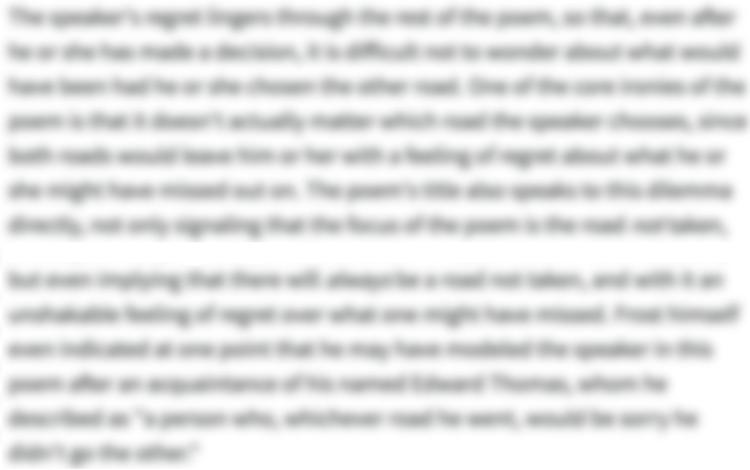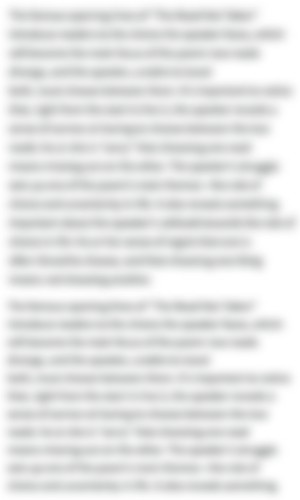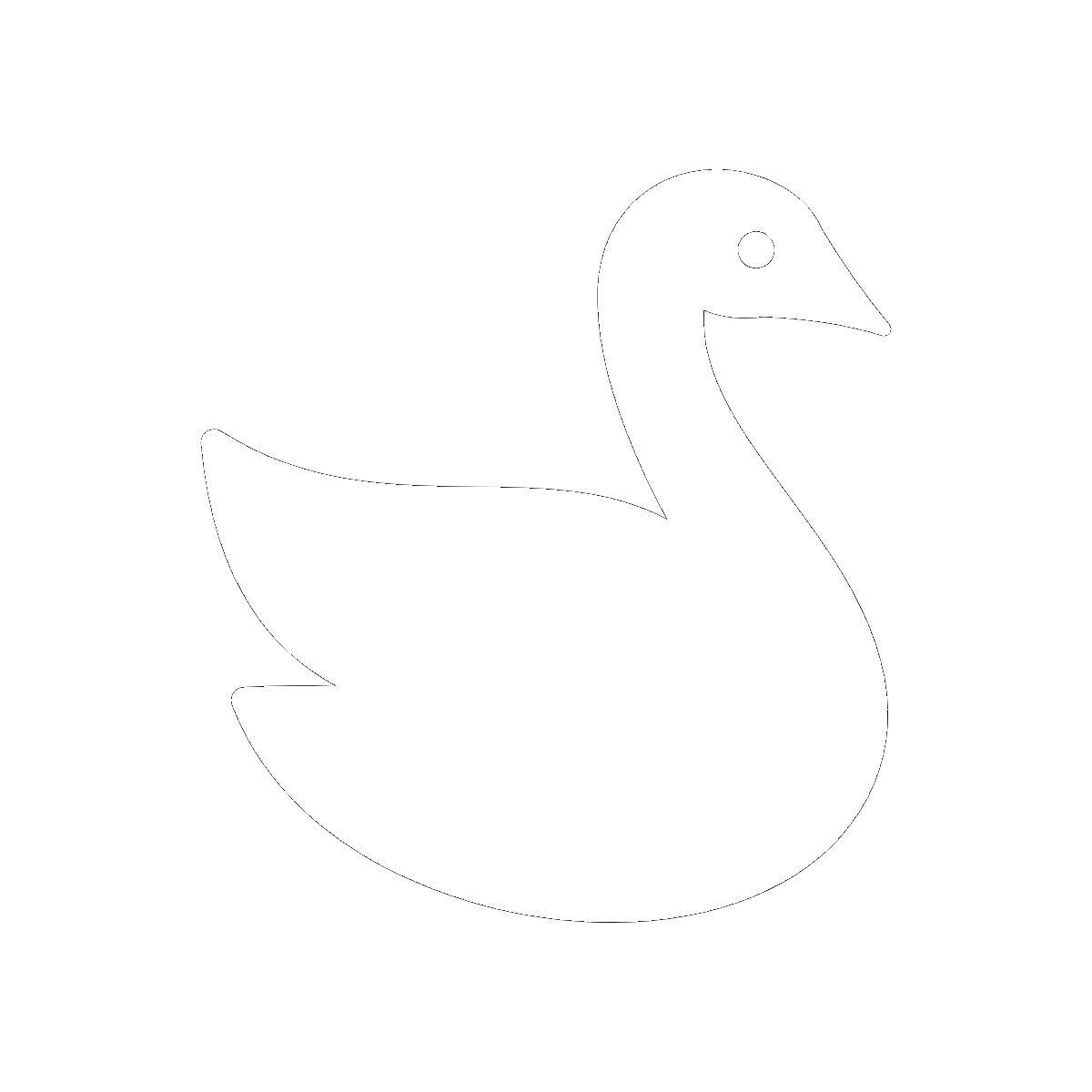-
“Winter Swans” Introduction
-
"Winter Swans" is a poem by contemporary British poet Owen Sheers. The premise of the poem is relatively straightforward: a couple who are having difficulties in their relationship go for a walk. It's been raining for days, seemingly reflecting the mood between the two people. While on their walk, the couple encounter some swans on a lake. The beauty and majesty of these swans gently remind the couple of the importance of their love, and by the poem's close, they are holding hands. Sheers's poems are often set in similar natural environments, and he is the anthologist behind A Poet's Guide to Britain—which groups together other nature poems along with some based in cities as well.
-
-
“Winter Swans” Summary
-
The clouds were exhausted. Over two days, they had rained all the water they had to give. Now there was a break in the rain, and so you and I went for a walk.
The sodden and muddy ground beneath us seemed to gasp for air with every step. We walked around the edge of the lake, distant from one another and not talking.
Then we saw some swans that stopped us in our tracks. In unison, they dipped their heads and long necks into the water. As though they were transferring heavy objects from their bodies down to their heads, they half-disappeared under the water.
When they did so, their remaining visible feathers looked like icebergs. The swans lingered underwater and then resurfaced, looking like boats rebalancing during a choppy storm.
You mentioned how swans pair up for life, as they flew away. They looked like pieces of porcelain flying over the water, which was becoming less choppy. I didn't say anything back to you, as we continued our walk in the afternoon sunlight.
We walked slowly around the lake's pebbles and sand. I saw that, without us thinking about it, our hands had traversed the gap between us as if swimming, and found each other. They were clasped over one another, and they looked like a pair of wings coming to rest when a bird lands.
-
-
“Winter Swans” Themes
-
Love and Partnership
“Winter Swans,” on the surface, is a straightforward poem about a couple going for a walk. They head to a lake and observe a group of swans bobbing their heads under the water. But despite its apparent simplicity, the poem explores what it actually means to be a couple—that is, to play an active role in a partnership. At the beginning of the poem there seems to be tension between the speaker and his lover, but as they walk outside and look at the swans, they seem to quietly realize the value of their love and subtly commit to one another once again. By the end they are reconciled, walking off into the poem’s distance holding hands. Coursing through the poem, then, is the idea that relationships take dedication and perseverance through rough patches—but also that they are worth that perseverance. Love requires work, the poem suggests, but it deserves people’s attention and effort.
At its outset, the poem sets up a kind of post-argument scene, with the weather reflecting the sour mood between the couple. The clouds have rained for two days and the personified earth “gulps” for air (a reference to the sound it makes underfoot because it is "waterlogged"). The couple “skirt[s]” the lake—hinting that, though they are physically together, they are avoiding one another emotionally. They are “silent and apart.” Overall, this section speaks to a perfectly natural but nevertheless difficult aspect of relationships: disagreement and conflict. The poem also seems to imply here that staying silent doesn’t really achieve any resolution in such moments.
But it’s at the lake that things start to change—specifically when the couple watches the swans dunking their heads in and out of the water. They look like "boats righting in rough weather," subtly suggesting to the couple the possibility of finding their own calm after the storm. It’s at this point that the silence between the pair is broken, as the speaker’s partner points out that swans “mate for life.” In other words, the swans provide an example of commitment, dedication, and partnership.
This seems to remind the couple of both the value of their love, and of the fact that sustaining and developing that love requires effort. “Mate for life” doesn’t just speak to the long-term nature of the couple’s relationship, but also equates "mating" with "life." That is, relationships (and mating) are linked directly with “life,” underscoring their importance to being human. Perhaps it’s realizing—or remembering—this significant idea that undermines the argument that the couple had been having prior to the poem’s opening.
Inspired by the example of the swans, the poem implies that the couple re-commits, as the speaker points out that their hands “had, somehow, / swum the distance between us.” The speaker notices that their hands are “folded” like “a pair of wings settling after flight.” “Settling” is a key word, with connotations of long-term commitment. The simile here, comparing held hands to settled wings, suggests that a relationship is a place of comfort and relief, like a home, to which a couple can always return.
In the end, then, the poem has shown the value of love while also insisting that love isn’t always smooth sailing; instead, it requires work, commitment, and understanding. In other words, love is a partnership dependent on dialogue and cooperation—and in this case it’s the graceful duos of swans that inspire the couple to remember the value of their partnership.
Where this theme appears in the poem:- Lines 1-3
- Lines 4-6
- Lines 6-8
- Lines 9-12
- Line 13
- Line 14
- Lines 14-20
-
Humanity and Nature
At the start of the poem, the speaker and his lover are in a kind of angry stupor as they go for a walk by a lake. But looking out on the natural scenery, particularly on a group of swans, changes their mood entirely, and even seems to inspire them to re-commit to one another. Thus, even though the poem begins by showing the way that people sometimes look at nature and view it through the prism of their own feelings, by the end the poem has demonstrated nature’s power to affect people’s frame of mind. The natural world in “Winter Swans” is ultimately presented as a model for how things should be—a place to which people can turn for inspiration and guidance.
The first few lines use both the pathetic fallacy and personification to indicate the way that the speaker and his lover view the world around them as a reflection of their own narrative—they seem to have fallen out with another and are barely speaking, and the weather has been awful to match. It has been raining relentlessly, a natural symbol of the couple’s misery. The way in which the muddy ground “gulp[s]” for breath under every step (because it is so "waterlogged") provides an image for the way in which the couple’s relationship is suffocating, trying and failing to get the “air” it needs to continue.
Indeed, the couple initially embrace the atmosphere of conflict and frustration. The way the mud seems to gasp beneath them conveys their exhaustion, perhaps even the fact that their relationship is close to its metaphorical death. They “skirt” the lake, using it as an obstacle to keep their distance from another—to remain “silent and apart.”
But then a group of swans appears, and the couple watch the birds gracefully dip their heads into “the dark water.” The swans seem stable and calm, even as they go through a dextrous series of movements, dunking their heads under the water in unison. It’s this grace and togetherness that gently suggests an alternative way for the couple to handle issues. That is, the swans function as a vivid alternative to the couple’s current situation. And not only do they seem graceful and together, but, as the speaker’s partner points out, they also mate for life. In other words, they provide a symbol of love that seems pure, simple, and true.
As the couple continue to walk and the bad mood between them fades away, they become close again, holding hands. The combination of metaphor and simile that the speaker uses here is telling: the couple’s hands “sw[i]m” towards one another and ended up “folded” together like the wings of a swan. This draws a clear link between the natural world and its effect on people: the couple have reconciled, and it is framed in such a way that makes the connection to the swans loud and clear.
Implicitly, then, the poem seeks to remind its reader of the importance of nature in human life. In other words, nature isn’t just something to be observed passively, but it can actually have real and significant effects on the way that people feel. In particular, nature offers reminders of simplicity and beauty—as in the figure of the swans—which in turn have a positive impact on the two people in the poem, both as individuals and as a couple.
Where this theme appears in the poem:- Lines 1-3
- Lines 4-12
- Lines 13-14
- Lines 16-20
-
-
Line-by-Line Explanation & Analysis of “Winter Swans”
-
Lines 1-5
The clouds had ...
... at our feetIn the first two stanzas, the poem immediately launches into its use of pathetic fallacy. The rainy weather mirrors the bleak state of the couple's relationship. The speaker says that "The clouds have given their all," as if they are exhausted, just like people, from raining. This in turn sets up a clear link between the natural environment and the mood of the poem's two main characters: the speaker and his partner. (A quick note: the poem does not specify the speaker's gender, but to make it easier to read this guide uses male pronouns).
The fact that the "clouds had given their all" hints that the couple, too, have reached some kind of end-point. Two full days of rain have fallen; rain, of course, is often associated with misery and sadness. But now the rain has stopped, and the couple have an opportunity to take a walk. The alliteration of line 3, in which three out of the four words begin with /w/, anticipates the description of the earth as "waterlogged" in the first line of stanza 2:
in which we walked,
the waterlogged earth
This repetition of /w/ sounds gives the lines a sort of trudging, heavy quality, mimicking the feeling of having soggy mud underfoot as you walk.
The second stanza, beginning with "the waterlogged earth," intensifies the opening pathetic fallacy into personification, making the link between the couple and their environment even more pronounced. Now, the "waterlogged earth" is described as "gulping for breath at our feet." The consonance of the two /g/ sounds is similar to the sound of a gulp, and the enjambment in stanza 2 creates a further sense of breathlessness as the lines topple into each other.
Of course, mud doesn't really need to breathe in the way that humans do—but describing it as struggling for breath relates to the way that the couple, metaphorically speaking, are themselves struggling for breath. Whatever they've been arguing about has nearly broken them, and so their relationship is in this sense close to death. This is the cue for the swans to arrive.
-
Lines 6-8
as we skirted ...
... tipping in unison.

Unlock all 341 words of this analysis of Lines 6-8 of “Winter Swans,” and get the Line-by-Line Analysis for every poem we cover.
Plus so much more...
Get LitCharts A+ -
Lines 9-12
As if rolling ...
... in rough weather. -
Lines 13-14
'They mate for ...
... the stilling water. -
Lines 14-18
I didn't reply ...
... distance between us -
Lines 19-20
and folded, one ...
... settling after flight.
-
-
“Winter Swans” Symbols
-
The Swans
It's obvious from the title of "Winter Swans" that the swans are an essential part of this poem. Indeed, their entry into the poem marks the turning point for the speaker and his partner. The swans symbolize long-term companionship. After all, "They mate for life."
The swans are mysterious and beautiful, putting on a display of majestic and graceful movement in unison which manages to shake the couple out of their stupor. Perhaps, too, the way that the swans' beauty has nothing to do with language or intellectual thought reminds the couple that sometimes the solution to a problem is more simple than they think—in this case, they just have to let the problem go and remember to value their love.
The swans offer a specific example of companionship and togetherness. The speaker's partner reminds them both out loud—in the only words that either of them says in the poem—that swans "mate for life." This helps put the couple's own relationship in perspective, reminding them of what is at stake.
Where this symbol appears in the poem:- Lines 8-14: “with a show of tipping in unison. / As if rolling weights down their bodies to their heads / they halved themselves in the dark water, / icebergs of white feather, paused before returning again / like boats righting in rough weather. / 'They mate for life' you said as they left, / porcelain over the stilling water.”
- Line 20: “like a pair of wings settling after flight.”
-
-
“Winter Swans” Poetic Devices & Figurative Language
-
Alliteration
Alliteration appears throughout "Winter Swans." In general, it helps to amplify the imagery and emotional heft of certain phrases. The first example is in lines 3 and 4. At this point, the poem is setting its scene, using pathetic fallacy to indicate that the speaker and his partner have been arguing and that the mood is still tense: it's been raining, and the earth is sodden with water. The couple is trudging over the damp ground, hinting at the way that they are also trudging through their relationship. Alliteration is used skillfully to show this:
in which we walked,
the waterlogged earth
These relentless /w/ sounds extend across the stanza break, conveying the persistent difficulties of the couple's relationship.
The alliteration that occurs across lines 6, 7, and 8 is specifically sibilance, so it's covered more extensively in that section of the guide. In brief, though, the whispering /s/ sounds here in "skirted," "silent," "swans," and "stopped" help build a sense of the hushed, tense atmosphere).
Another key example of alliteration is in lines 11-12:
... paused before returning again
like boats righting in rough weather.Here, the poem is describing the graceful, almost ritualistic, movement of the swans. In "unison," they dunk their heads under the water, rotating their bodies downwards. The repeated /r/ sounds add a sense of sure-footedness to the lines, conveying the swans' easy ability to stabilize themselves after doing so. This process of "righting" themselves also works as a kind of symbol for the couple, subtly inspiring them to reconcile their relationship; the use of alliteration, then, helps focus readers' attention on a particularly important moment in the poem.
Where alliteration appears in the poem:- Line 3: “w,” “w,” “w”
- Line 4: “w”
- Line 5: “f,” “f”
- Line 6: “s,” “s”
- Line 7: “s,” “s”
- Line 9: “h”
- Line 10: “h,” “w”
- Line 11: “w,” “r”
- Line 12: “r,” “r”
- Line 13: “l,” “l”
- Line 16: “s,” “s,” “s”
- Line 17: “h,” “h,” “s”
- Line 18: “s”
-
Assonance


Unlock all 272 words of this analysis of Assonance in “Winter Swans,” and get the poetic device analyses for every poem we cover.
Plus so much more...
Get LitCharts A+ -
Caesura
-
Enjambment
-
Metaphor
-
Pathetic Fallacy
-
Personification
-
Sibilance
-
Simile
-
-
“Winter Swans” Vocabulary
Select any word below to get its definition in the context of the poem. The words are listed in the order in which they appear in the poem.
- Waterlogged
- Skirted
- Tipping
- Righting
- Porcelain
- Stilling
- Shingle
Waterlogged-
(Location in poem: Line 4: “waterlogged”)
This means damp and full of water, reflecting how much it has been raining.
-
Form, Meter, & Rhyme Scheme of “Winter Swans”
-
Form
"Winter Swans" is formally organized into tercets—three-line stanzas—right up until the final two lines. The poem ends on a couplet—a two line stanza—because this helps convey the way that the speaker and his lover have come back together after their argument. The couplet, in other words, signals their re-coupling.
Read in this way, the tercets suggest some extra element or distance that has come between the couple. This could be the argument itself, or the general bad mood that they are both in—a kind of unwanted third party. At any rate, the three-line structure signals an imbalance in the couple that the final, two-line stanza resolves.
Additionally, the poem varies its phrases and line length, so that sentences sprawl and unwind over several stanzas. The poem's free verse form helps grant it this flexibility. This in turn allows the poem to move gracefully through its chronological discussion of the couple's walk, hinting at the graceful—and significant—movement of the swans on the water.
-
Meter
"Winter Swans" does not use a discernible metrical scheme, which means it is written in free verse. Of course, the language still has stressed and unstressed syllables, and the poem plays with these stresses to its advantage.
For instance, there is a moment in the first stanza in which an iambic rhythm (da DUM) briefly appears:
two days | of rain | and then | a break
in which | we walkedAt first, this rhythm mimics the patter of rain. Then, it captures the motion of walking, stressed syllable following unstressed syllable like one heel after another.
Sometimes, the lack of strict meter allows the poem to create a cumbersome feeling, like the couple's trudge through the mud in the second stanza:
the waterlogged earth
gulping for breath at our feetThis first line piles on stress to capture the thick, squelchy mud, while the second line spaces out the stresses to mimic the gasping effect it describes.
At other times, as in the discussion of the swans, the stresses can flow gracefully, hinting at the movements of the swans:
As if rolling weights down their bodies to their heads
Here, the unpredictable stresses "roll" out in a pattern that is both irregular and graceful, just like the swans' necks as they stretch into the water.
-
Rhyme Scheme
There is no rhyme scheme in "Winter Swans." This contributes to the poem's attempt to authentically portray the discordant state the couple finds themselves in. That is, whereas rhymes represent a kind of sonic union between words, the lack of rhymes suggests that some sort of unity has been left out of the poem. The poem's couple is going through a difficult time, finding it hard to resolve their differences. The poem's lack of rhyme reflects this.
That said, the poem does employ some incidental rhymes near the end that represent moments of harmony. For instance, in the fourth stanza the speaker compares the swans to
icebergs of white feather, paused before returning again
like boats righting in rough weather.Here, rhyme captures how the swans return to upright positions, slipping back into place like the repeated sounds of these words. These similar sounds mirror the similarity in motion between swans and boats. This, in turn, mirrors the speaker's own desire to "right" his relationship with his lover.
Another similar rhyme occurs in the second-to-last stanza:
slow-stepping in the lake's shingle and sand,
I noticed our handsOnce again, the rhyme represents a moment of harmony. Here, as the speaker and his lover begin walking again, their hands instinctually join together in a clasp—just as the rhyming words are joined together by sound.
Apart from these two moments of rhyme, the poem basically follows the conventions of its time. That is, "Winter Swans" was written at a time (the early 2000s) when it was—as it still is—common for poets to avoid rhyme. Instead, the poem employs a fairly standard form of free verse that uses devices like assonance, alliteration, and enjambment to achieve a sense of artfulness.
-
-
“Winter Swans” Speaker
-
The speaker in "Winter Swans" uses the first-person point of view throughout. The reader doesn't learn too much about the speaker's identity specifically, but it's clear that he is in a relationship with the other person in the poem (the "you"). (Though the gender of the speaker is unspecified, this guide has used the male pronoun simply to help differentiate between the speaker and the swans more clearly.) The speaker mostly speaks in terms of "we," but at key moments does say "I." This means that even the pronouns contain a miniature version of the poem's conflict. That is, there is a "we," but there is also an "I" and a "you." That "we" is under the threat of permanently separating, breaking down into "I" and "you."
In his telling of the poem's story, the speaker shows an affinity with nature. This doesn't mean that he's an expert, but more that he is capable of being affected—emotionally and intellectually—by the natural world. Indeed, it's the sight of the swans that seems to spark the speaker's reconciliation with his partner. This all happens without too much thought, the speaker only "notic[ing]" the way that his hand and his lover's find their way to one another after it's happened.
-
-
“Winter Swans” Setting
-
"Winter Swans" is set outside by a lake after a period of heavy rain. This natural setting is important, because it's through the observation of nature that the poem's couple comes to see the value of their love. The poem opens with pathetic fallacy, which is an important part of the scene-setting. The "two days of rain" mirrors the difficult patch that the couple is going through, and the "waterlogged earth" shows that, metaphorically speaking, they are on difficult and cumbersome terrain.
But just as the natural setting can reflect the couple's bad mood, and even perhaps intensify it, the natural world is also capable of affecting things for the better. Indeed, it is the majestic "show" of the swans—as they dip and dunk their heads, necks, and bodies into the water—that shakes the couple out of their stupor. The swans offer a kind of model relationship of love and companionship: "They mate for life." In other words, the natural world gently shows the couple a different way of being. By the poem's ending, the natural setting even influences the way that the speaker sees the human world. He holds hands with his lover and notices that together their hands look like swans' wings.
-
-
Literary and Historical Context of “Winter Swans”
Literary Context
Owen Sheers, born in 1974, is a British poet from Wales who also works as a TV presenter, playwright, and anthologist. He grew up in Wales, later completing an MA in Creative Writing at the University of East Anglia, an institution at which the poet Denise Riley also teaches.
Sheers's poems often engage with the natural world, focusing on questions of place and humankind's relationship to its environments. Indeed, he anthologized a collection of poems by various poets under the title A Poet's Guide to Britain, the chapter headings of which show his belief in the importance of poetry grounded in an attentive sense of place: "London and Cities," "Villages and Towns," "Mountains and Moorland," "Islands," "Woods and Forest," and "Coast and Sea."
This is certainly not the first poem to feature swans front and center! Inquisitive readers could compare the role of the swans in this poem with those in two of W.B. Yeats's poems, for example: "Leda and the Swan," and "The Wild Swans at Coole." While the first of these poems relates to Greek myth, the second shares a tendency with this poem to see the swans as symbolic figures capable of teaching something to their human observers. A more contemporary comparison would be "Why the Swan" by Andrew Lambeth.
Historical Context
Owen Sheers was born in 1974 and is currently active as a poet; his first collection was published in 2000. Sheers is from Wales, which is part of the United Kingdom. Currently, the U.K. head of state is Queen Elizabeth II—she has been on the throne since 1952. Technically speaking, the Queen owns all of the unmarked mute swans within the U.K. Indeed, due to a long-established legal context, the royal family are the pretty much the only group legally allowed to hunt swans (the only others are the attendees of St John's College at Cambridge). Perhaps this association of swans and royalty is relevant to the way that the former are often perceived as glamorous creatures.
The swans that appear in this poem are known as mute swans. The clue as to why is in the name itself—they don't make much noise, especially when compared with other swans or birds more generally. The mute swan was a trading commodity during the Middle Ages, and they were often exchanged between noblemen. Though they have a reputation for grace and majesty, swans are in fact capable of acting quite aggressively towards humans—they are powerful and muscular creatures.
-
More “Winter Swans” Resources
-
External Resources
-
An Interview with Owen Sheers — Owen Sheers answers question in a piece produced by the Welsh Joint Education Committee.
-
"The Wild Swans at Coole," by W.B. Yeats — A poem that features swans by one of the 20th century's most famous Irish poets, William Butler Yeats.
-
More Poems by Sheers — A valuable resource containing other poems by Sheers—and recordings.
-
Swans Themselves — A BBC article that looks at the history—and some of the myths—relating to swans.
-
"Why The Swan," by Andrew Lambeth — Another contemporary poem in which swans play an important role.
-
-
LitCharts on Other Poems by Owen Sheers
-











